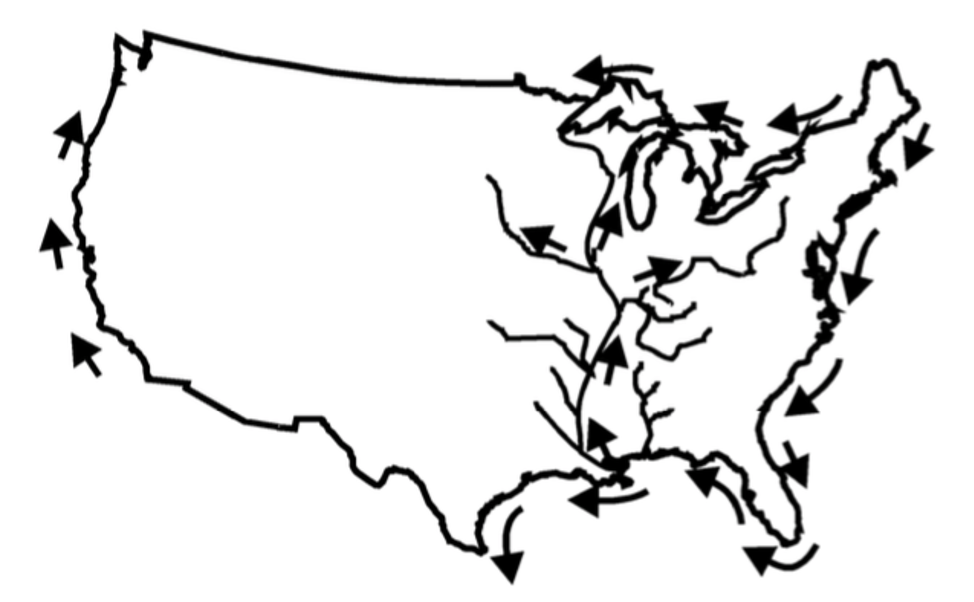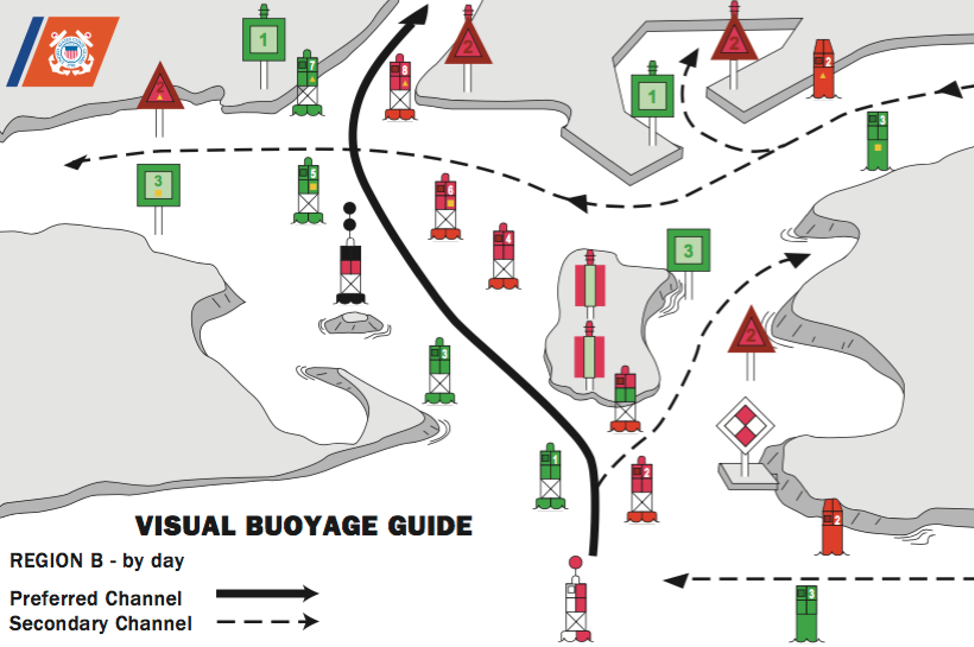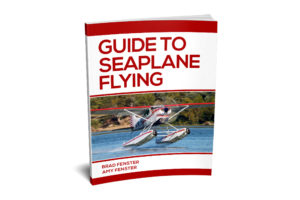Other Seaplane Items
This section outlines additional items related to float operations.
Noise Abatement
Seaplanes are often loud. They are regularly in the proximity of non-aviation people, such as lakefront residents, vacationers, etc. In order to minimize conflict with residents, it is best to minimize the noise created by the plane. The takeoff is the primary phase of flight that receives complaints. With a few simple steps, the noise can be reduced significantly. Safety is a primary concern, so only the appropriate procedures below should be applied if it is safe to do so in the current situation. When safety permits, the pilot can:
- Perform a circling climb out over the water. As the prop is at full RPM during the climb, the airplane is at its loudest. By staying over the water, it is less likely for people to complain about the noise.
- Reduce RPM as soon as possible after a good altitude has been obtained. Climbing out with 200 less RPM is a lot quieter, but ensure that there is the room to do so safely. Reduced power on climb out is helpful in cooling large engines as well.
- Fly slightly higher. A few hundred feet in altitude makes a significant difference in noise on the ground.
- Avoid prolonged or multiple take offs and landings in the same area. Most people enjoy seeing a seaplane initially, but after three or four takeoffs, the same people might start to complain.
Checklists
Seaplanes have often been modified with Supplemental Type Certificates (STC)s or field approvals in addition to the float installation. Common modifications include bigger engines, more efficient propellers, vortex generators, wing extensions, etc. These modifications may significantly alter performance or require nonstandard procedures. It is a good idea to create checklists specific to the seaplane being flown. Changes to performance and procedures will be listed on the relevant STC.
Status of Seaplanes as Vessels
Seaplanes are considered to be vessels at all times when on the water’s surface. All vessels are required to comply with Coast Guard navigation rules. Compliance with 14 CFR 91.115 will ensure compliance with Coast Guard regulations.
Use of Seatbelts and Shoulder Harnesses in Seaplanes
Seaplane pilots and passengers pushing off from a dock or mooring the plane are exempt from the requirement to wear a seatbelt. However, a seatbelt must be worn during takeoff and landing, and enroute if in a pilot seat, see 14 CFR 91.107.
Invasive Species
Plants or animals that are introduced into a habitat and harm the ecosystem are called invasive species. Invasive species are introduced by human activity—often accidentally. A few simple steps can be taken to prevent their spread.
- Always pump out the floats before flying.
- Check the water rudders and cables for vegetation, remove any vegetation found.
- Scrape off any mussels attached to the floats.
- Repeatedly raise and lower the water rudders after takeoff from contaminated waters. This procedure should be done while still over the contaminated body of water.
- Take an available course on invasive species prevention, such as those provided by the Seaplane Pilots Association.
- Obtain information about local invasive species from state and local agencies, such as a department of natural resources or equivalent.
Handling Boat Wakes
Avoid taking off or landing in a boat wakes. Large boats may produce swells that should be avoided. Crossing a wake during step taxi can cause the plane to skip. Add back pressure and power to correct for a skip. Wakes are best crossed at a 45 degree angle during idle taxi.
Handling Boat Traffic
Seaplanes have to share the water’s surface with boats. Remember that boat operators will not be familiar with the limitations of seaplane maneuverability. Seaplane activity will often draw boats to an area. Do not follow a boat pulling a skier; the skier may fall. Expect jet skis to move unpredictably. Always follow the right-of-way rules as outlined in the next section.
Rules of the Road
A seaplane pilot is more likely to deal with boat traffic than the skipper of a boat is to deal with seaplane traffic. Give watercraft a wide berth, they are not looking for airplanes and do not understand a seaplane’s abilities and limitations. When landing, the aircraft should give way to the vessels on the water.
When operating on the water:
- Each person operating an aircraft on the water shall, insofar as possible, keep clear of all vessels and avoid impeding their navigation, and shall give way to any vessel or other aircraft that is given the right-of-way by any rule of this section.
- When aircraft, or an aircraft and a vessel, are on crossing courses, the aircraft or vessel to the other’s right has the right-of-way.
- When aircraft, or an aircraft and a vessel, are approaching head-on, or nearly so, each shall alter its course to the right to keep well clear.
- Each aircraft or vessel that is being overtaken has the right-of-way, and the one overtaking shall alter course to keep well clear.
- When aircraft, or an aircraft and a vessel, approach so as to involve risk of collision, each aircraft or vessel shall proceed with careful regard to existing circumstances, including the limitations of the respective craft.
Loading Passengers
Brief the passengers on seaplane safety. A sample briefing is located in the appendix. The briefing should be modified to the specific type of operations, aircraft, etc.
When loading passengers into an amphibious seaplane on land, be very careful. The height above the ground is significant. Although many amphibious seaplanes have a notch or step in the float, consider having assistants and/or an outside step or ladder if routinely boarding passengers.
Waterway Navigation
The seaplane pilot must adhere to the same navigation rules as other watercraft. Below is a brief overview of key navigational rules.
“Red Right Returning” is used to keep the red markers on the right of the vessel (aircraft) when returning from sea. However, for inland waterways, the marking systems generally follow a clockwise pattern. Keep the red marker on the right when returning from seaward and when transiting from north to south along the Atlantic Coast, from south to north and east to west along the Gulf Coast, from south to north and east to west along the Pacific Coast, and from east to west in the Great Lakes except for Lake Michigan which is north to south.
This concept is put together on the following example of an inland waterway.
Knots
Seaplane operations are likely to require the use of tying knots, such as when docking. There are several knots that a seaplane pilot should know how to tie. These include the square knot, half hitch, bowline, and cleat hitch. Instructions on tying these knots are included in the appendix.
DEFINITIONS:
Buoy: Floating objects moored to the bottom to mark a channel, waterway, or obstruction.
Can Buoys: Cylindrical buoys marking the left side of a channel for an inbound vessel. They have odd numbers which increase from seaward.
Daybeacons: Unlighted beacons.
Daymarks: Conspicuous markings or shape that aid in making navigational aids readily visible and easy to identify against daylight viewing backgrounds.
Nun Buoys: Conical buoys marking the left side of a channel for an inbound vessel. They often have even numbers that increase as the vessel progresses from seaward.
QUESTIONS:
What are some ways to limit the noise of a seaplane? Reduce the RPM as soon as feasible, climb out over the water, and minimize any low altitude flying over residents. Safety is a primary concern, so only apply the procedures if it is safe to do so in the current situation.
A seaplane is taxiing a seaplane on the water and it is on a collision course with a boat. Who has the right away? Both vessels should turn to the right.
While approaching to land on a small lake and there is a boat on a track to be in the approach path. Who has the right of way? The boat has the right away.



